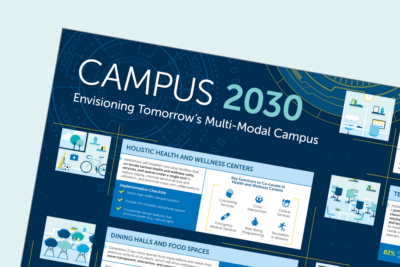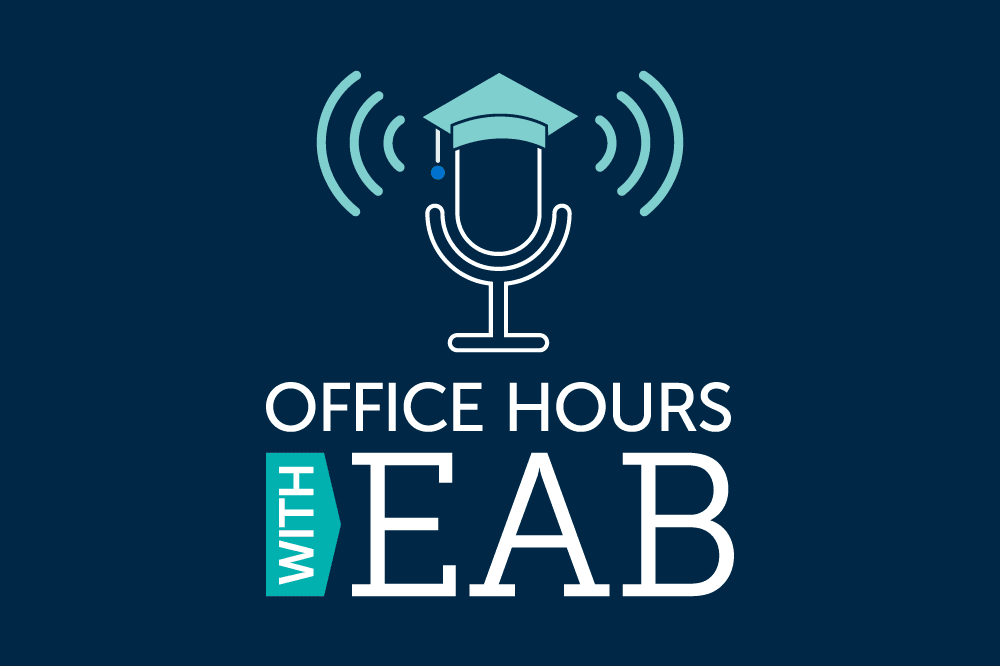Resources
Featured Resources

Insight Paper
College Search Trends Across Space and Time
This insight paper delves into college search trends in the application process among first-time undergraduates at four-year institutions.
Enroll360

Infographic
Campus 2030: Envisioning tomorrow’s multi-modal campus
Explore our infographic to learn about the future of the multi-modal campus and how seven spaces will change…
Strategic Advisory Services

Research Report
The Rise of the Chief Wellness Officer
Chief Wellness Officer (CWO) positions have grown rapidly across the past few years due to growth in appreciation…
Strategic Advisory Services
Recent Blog Posts
More Blog Posts
Blog Post
EAB Wrapped 2025: A year of reckoning—and reinvention—in higher ed
Higher Education Strategy Blog
Blog Post
When Grad PLUS disappears: What 8,000+ grad students said about paying for school
Adult Education BlogLatest Podcast Episode
More Episodes
Podcast
How NEON Is Transforming College Access
In this episode, we sit down with NEON to explore how their partnership model is changing the game…

Podcast
How Industry Partnerships Fuel Growth at Wichita State
Wichita State University President Richard Muma shares how deep industry partnerships are elevating the student experience, fueling research,…

Podcast
How Loan Reform Will Redefine Graduate Education
Experts share tips for graduate enrollment leaders and financial aid strategists on how to prepare for the elimination…
Latest Partner Resource

Insight Paper
The New Rules of Engagement for Enrolling Today’s Adult Learners
Read this insight paper for four insights to help you effectively adapt your enrollment strategies to meet shifting…
Adult Learner Recruitment








